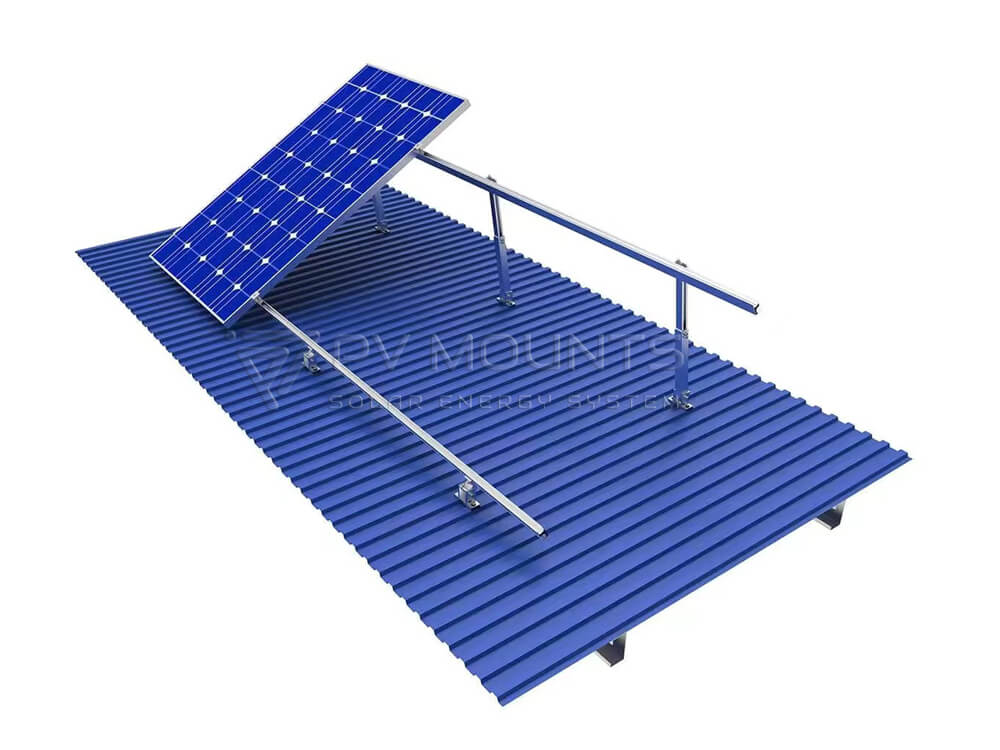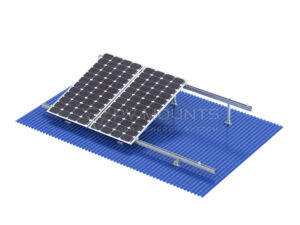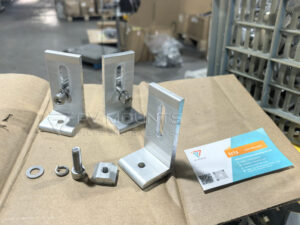With the energy sources are becoming increasingly significant, solar power play a vital role in the global transition towards sustainability. This transformation is caused by the need to reduce carbon emissions and the growing willing of the finite nature of fossil fuels. Solar energy, with its abundance and accessibility, offers a promising solution to these challenges.
The efficiency and longevity of solar panels heavily depend on the quality of their installation, particularly the mounting system. A well-designed and installed solar panel rail mounting kit not only ensures the structural integrity of the solar panels but also maximizes their energy production by aligning them in the optimal orientation and angle for sunlight exposure.
Understanding Solar Panel Rail Mounting Kits
Components of a Rail Mounting Kit
A solar panel rail mounting kit typically comprises several key components, including mounting rails, brackets, clamps, and grounding equipment. These components work in tandem to secure the solar panels to the roof or ground, providing a stable foundation that can withstand environmental stresses such as wind, rain, and snow.
How Rail Mounting Kits Work
Rail mounting kits function by creating a framework onto which solar panels can be attached and secured. The rails are anchored to the roof or ground, and the solar panels are then clamped onto these rails. This setup allows for the adjustment of the panels’ tilt and orientation, optimizing them for maximum solar exposure.
Types of Solar Panel Rail Mounting Kits
Standard Rail Mounting Kits
Standard rail mounting kits are designed to be versatile and adaptable to a wide scale of roofing materials and types. They provide a reliable solution for the majority of solar panel installations, offering a balance between ease of installation and structural integrity.
Flush Mount Rail Kits
Flush mount rail kits are tailored for installations that require a low-profile appearance. They allow the solar panels to sit closer to the roof surface, reducing the gap and creating a sleek, aesthetically pleasing look.
Adjustable Rail Mounting Kits
Adjustable rail mounting kits offer the flexibility to adjust the tilt angle of the solar panels. Optimizes yearly sunlight capture by reorienting panels for seasonal exposure shifts.
Benefits of Using Rail Mounting Kits for Solar Panels
Enhanced Durability and Stability
Rail mounting kits are engineered to provide a secure and durable foundation for solar panels. Kits spread load evenly, reducing environmental damage risk and enhancing solar installation longevity.
Improved Energy Efficiency
By facilitating the optimal orientation and tilt of solar panels, rail mounting kits play a crucial role in maximizing the system’s energy production. This not only improves the efficiency of the solar installation but also increases the return on investment over its lifespan.
Ease of Installation and Maintenance
Designed with both installers and end-users in mind, rail mounting kits simplify the installation process and make future maintenance and upgrades more manageable. This accessibility encourages the adoption of solar energy by making it a more feasible option for a wider range of applications.
Considerations Before Choosing a Solar Panel Rail Mounting Kit
Roof Type and Material Compatibility
The selection of a solar panel rail mounting kit must take into account the specific type and material of the roof to ensure compatibility and optimal performance. Consider roof slope, materials, and obstacles to select the best mounting solution.
Load Bearing Capacity
It is essential to evaluate the load-bearing capacity of the roof or ground where the solar panels will be installed. This includes not only the weight of the panels and mounting system but also additional loads from snow, wind, and maintenance activities.
Weather and Environmental Factors
The local climate and environmental conditions is a key factor in the selection of a rail mounting kit. Systems designed to withstand high winds, heavy snowfall, and other extreme weather conditions are crucial for installations in areas prone to such events.
Installation Process of Solar Panel Rail Mounting Kits
Planning and Measuring
A successful installation begins with thorough planning and accurate measurement. This stage involves determining the best layout for the solar panels, taking into consideration factors such as orientation, shading and spacing requirements.
Assembling the Components
Once the planning phase is complete, the next step is to assemble the components of the rail mounting kit. This includes attaching the mounting rails to the roof or ground and ensuring that all connections are secure and properly aligned.
Securing the Rails and Panels
Once the framework is in place, installers can mount the solar panels onto the rails and secure them. Installers must apply precision to space the panels evenly and attach them firmly, ensuring a stable and efficient solar installation.
Maintenance and Care for Solar Panel Rail Mounting Systems
Routine Inspection Schedule
Regular inspections are vital to maintaining the performance and longevity of a solar panel rail mounting system. These inspections should focus on identifying and addressing issues such as loose components, corrosion, and damage from environmental exposure.
Cleaning and Upkeep
Keeping the solar panels and mounting system clean is essential for optimal energy production. Dirt, debris, and other obstructions can significantly reduce the efficiency of the solar panels, making regular cleaning a crucial maintenance task.
Addressing Wear and Tear
Over time, the components of a solar panel rail mounting system may experience wear and tear. Proactive maintenance and timely replacement of worn parts can prevent system failures and extend the life of the solar installation.
Common Challenges and Solutions in Solar Panel Rail Mounting
Mitigating Wind Load Issues
High winds can pose a significant threat to the stability of solar panel installations. Selecting mounting kits designed to withstand wind loads and ensuring proper installation techniques can mitigate these risks.
Overcoming Roof Irregularities
Roof irregularities, such as uneven surfaces or obstructions, can complicate the installation of solar panel rail mounting kits. Solutions include using adjustable components and customizing the layout to accommodate these variations.
Ensuring Water Drainage and Sealant Integrity
Proper water drainage and sealant integrity are critical to preventing roof leaks and water damage. Install mounting kits to ensure roof drainage flows freely and to preserve the integrity of roof sealants and barriers.
Conclusion
Choosing the right solar panel rail mounting kit is paramount to the efficiency, durability, and success of any solar installation. By prioritizing factors such as compatibility, resilience, and ease of installation, individuals and businesses can ensure their solar systems are robust and efficient. As solar energy adoption escalates, the demand for innovative, versatile mounting solutions that cater to diverse environments and installation needs is becoming critical. The future of solar installations hinges on the development of such adaptable, strong, and straightforward mounting kits, marking a significant stride towards a sustainable and efficient energy landscape.













